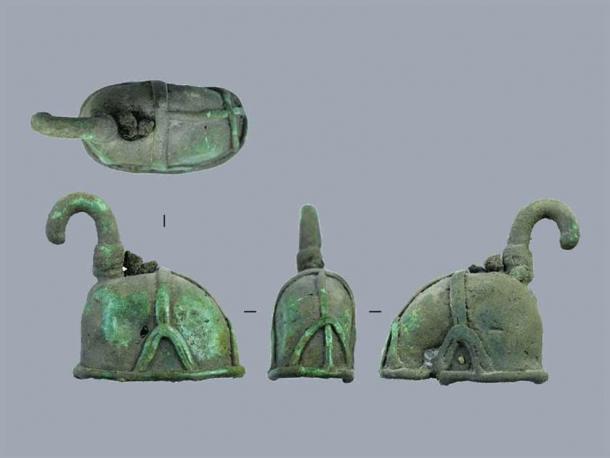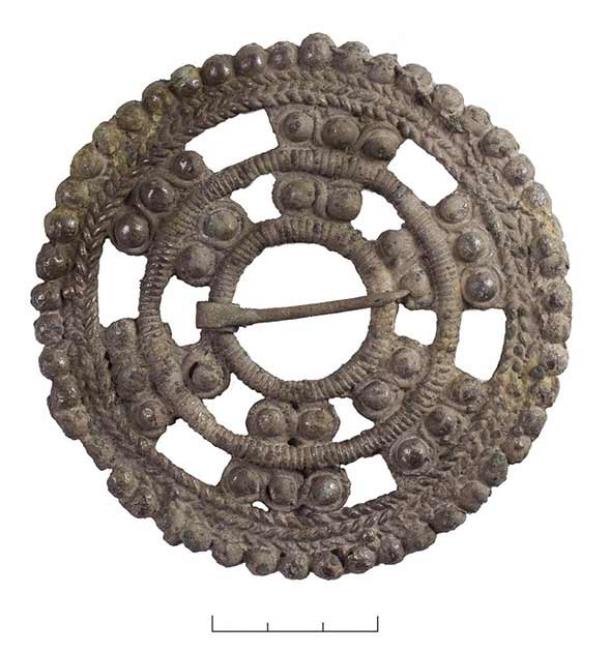In its twentieth year of fieldwork and archaeological investigation, the Institute of Archaeology of the Russian Academy of Sciences has stumbled upon an unexpected and wonderful discovery related to the indigenous Volga Finns culture. The hoard included women’s jewelry and treasures dating to the middle of the first millennium AD was found.
The Volga Finns Hoard: Costume Jewelry, Beads and Pendants
The Volga Finn hoard was uncovered in Russia’s Suzdal region, roughly 124 miles (200 kilometers) east of the capital Moscow, during ongoing surveys of a previously unexplored area in an ancient settlement where fragments of jewelry appeared on the surface due to agricultural activity.
Following this, a 2×2 meter (6.5 x 6.5 feet) exploratory pit was created in the immediate vicinity, revealing Volga-Finn jewelry deposits from the period of the Great Nations Migration (or what the Romans saw as “ Barbarian invasions ,” between the late 4th century and mid-6th century AD).
The treasure consists of ornaments for a traditional female costume, typical of the Volga Finns culture, and an imported metal bowl, reports Heritage Daily . The ornamental deposit included three bracelets made of beads, and over 300 small beads which were probably embroidered onto a decayed piece of clothing.
The researchers also discovered six cast hollow “duck” pendants suspended on a leather cord with threaded metal beads and a round openwork fastener plaque. A metal bowl with a loop-shaped handle, that predates the ornamental deposit, was also discovered and is suspected to be an item “imported” from the Middle East.

The Suzdal Russian Volga Finns hoard included these distinctive “duck pendants.” ( Institute of Archeology of the Russian Academy of Sciences )
The waterfowl image was common to the Volga-Ural region at the end of the 1st century to the beginning of the 2nd millennium AD. The ancient duck pendant artifacts are represented by several examples, which were previously unknown in the Suzdal region.
Similar pendant forms have been unearthed in the Kama region related to the Azelin culture, an Eastern European sub-Neolithic archaeological culture from the 6th-4th millennium BC.
A lot of the Suzdal site discoveries, especially the duck pendants, were typical of the Finno-Ugric cultures inhabiting the region between the Volga River and the Urals.
The Volga Finns, also known as the Eastern Finns, spoke the Uralic language and are classified as the indigenous Russian people living in the geographical vicinity of the Volga region . The Volga Finns, who have nothing to do with Finnish people of Finland, are believed to be the historical predecessors of the Slavic tribes.
According to Alexander Morozov of the Institute of Archaeology of the Russian Academy of Sciences, these are not just collected items: they are elements of a woman’s costume. The treasure hoard find shines new light on the Volga Finns prehistory in the Suzdal area, which is known today as one of the centers of ancient Russian indigenous culture.
Further study of the treasure hoard artifacts and the settlement they were found in will make it possible to understand this area before the beginnings of Slavic colonization.

This ancient metal abacus was also found at the Suzdal site in Russia. ( Institute of Archeology of the Russian Academy of Sciences )
The Volga Finns and Their Culture
By about 1200 BC, the Volga Finns were known to be a distinctive indigenous culture that split into the Mordvins, and the Cheremis (or the Mari), who lived on opposite sides of the Volga River . Sparse settlements characterized their initial period of habitation. At some point there was a relatively “fast” transition from a nomadic way of life to a settled and sedentary way of living, which is attributed to the rapid language differentiation.
The Volga Finns as a larger and broader social group have been heavily influenced by habitat, climate, and other ecological factors. And these factors were a driving force behind the organization of their economy, society, and spiritual beliefs .
The various invasions and migrations across this part of the vast Russia landscape have meant that different subgroups have been influenced by different forces, leading to distinctive identities, cultural histories, habitats, and levels of civilization.
The rationale for hiding the Volga Finns Suzdal treasure hoard remains a mystery, but further investigations should reveal more about the history and development of the Suzdal region, of which little is known today.
Top image: The Volga-Finn Suzdal treasure hoard found about 124 miles (200 km) east of Moscow, Russia at the Suzdal dig site. Source: Institute of Archeology of the Russian Academy of Sciences
By Sahir Pandey
Related posts:
Views: 0
 RSS Feed
RSS Feed

















 August 17th, 2021
August 17th, 2021  Awake Goy
Awake Goy  Posted in
Posted in  Tags:
Tags: 
















